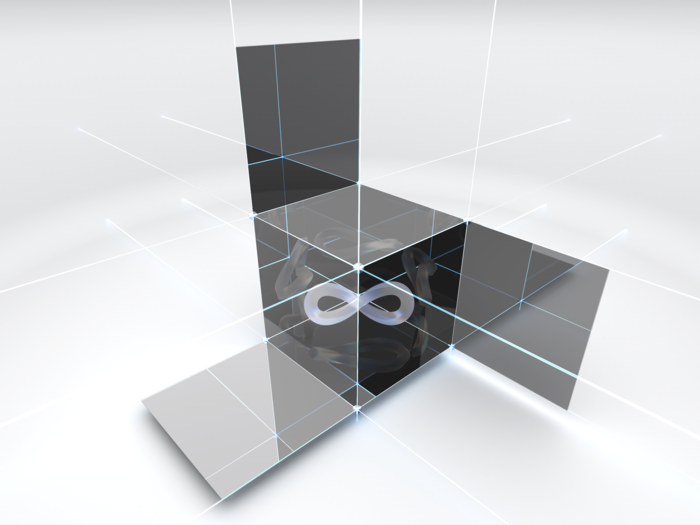Topology is everywhere
Topology is an important branch of mathematics. It deals with such properties of mathematical forms that are preserved under constant deformation (i.e. without tearing or cutting them). Topology is also the basis of the plot in my upcoming Möbius trilogy. The strange artifact in question is a topological construct. As an author, I am naturally delighted when an international team of researchers has now discovered and published in the journal Science that almost all materials in nature have at least one topological state. This contradicts the forty-year-old assumption that topological materials are rare and esoteric. “Topology is everywhere” is the title of the press release about it.
Why is this an exciting announcement? Materials with topological properties are often characterized by unusually robust states. The electronic properties of their exposed surfaces and edges are insensitive to local perturbations. Topological phases of matter in 3D materials were first discovered 15 years ago. Topological materials could aid in the observation and development of exotic effects, such as the conversion of electric current and spin, the simulation of exotic theories from high-energy physics, and, under the right conditions, even the storage and manipulation of quantum information. Although a handful of topological materials have already been found, topological electronic states in solids were generally considered rare and esoteric.
However, using high-throughput computational models, the team discovered that more than half of the known 3D materials in nature are topological. Using a combined chemical and topological analysis, the team grouped the electronic structures into about 38,000 unique materials. The researchers also discovered that almost all materials – nearly 90 percent – harbor topological electronic states away from their actual electron number, known as the Fermi level.
Perhaps even more surprising than the discovery of topological properties in nearly every material was the discovery of some extreme cases of topology across the energy spectrum. “Looking at our data, surprisingly, we found materials with topological properties everywhere,” explained Maia Garcia-Vergniory of the Donostia International Physics Center (DIPC) and the Max Planck Institute for Chemical Physics of Solids. The team found that two percent of known materials are “supertopological,” meaning that every electronic band above the tightly bound core electrons has topological properties. Materials with previously overlooked supertopology include, for example, bismuth, one of the best-studied elements historically. “Our results suggest that topology is a fundamental property of matter that has been overlooked,” García-Vergniory concludes.
